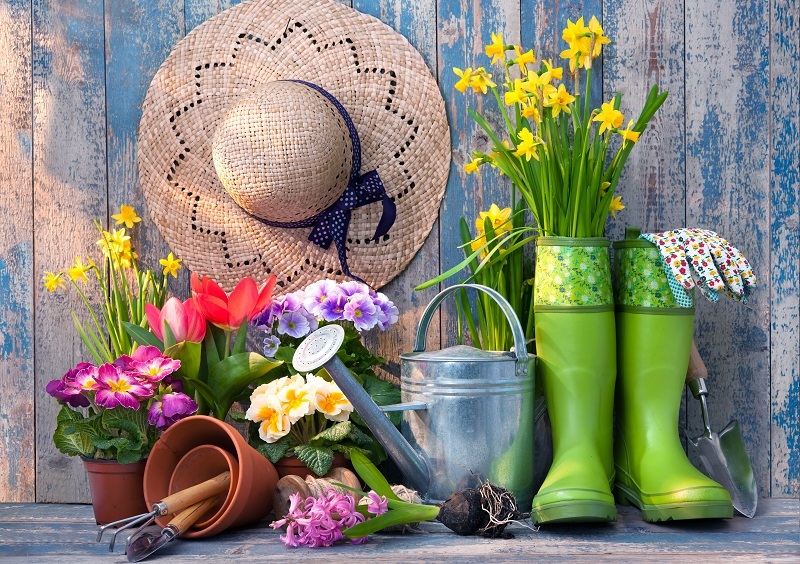Revealing the Mystery of Your Birth Flower and Its Personal Insights
Posted on 14/08/2025
Revealing the Mystery of Your Birth Flower and Its Personal Insights
Have you ever wondered what your birth flower says about you? The tradition of birth flowers dates back centuries, blending botanical lore, symbolism, and unique personal significance. Just like zodiac signs and birthstones, each month is associated with a special bloom, believed to reveal hidden aspects of personality and destiny. In this comprehensive article, we'll uncover the mystique of your birth flower, exploring the meanings, history, and personal insights these blossoms carry. Let's embark on a blooming journey of self-discovery!

What Is a Birth Flower?
Birth flowers are specific types of flowers associated with each month of the year. These floral symbols have been part of European and Asian cultural traditions for centuries, often used in celebrations, folklore, and even as talismans for good luck. Your birth flower carries both botanical significance and unique messages about your character traits, preferences, and potential strengths or vulnerabilities.
The Origins of Birth Flower Traditions
The tradition of linking certain flowers to months first appeared in ancient Rome and Greece, where flowers were deeply woven into mythology and daily ritual. But it was in the Victorian era that birth flower symbolism flourished. During this time, communicating through the "language of flowers"--also called floriography--became a sophisticated way to express feelings that words could not. Each month was soon adorned with a special flower, turning birth flower meanings into a beloved way to personalize greetings, gifts, and celebrations.
Birth Flowers by Month: Their Meanings and Insights
Each month has its own signature flower, each rich in symbolism and legend. Let's delve into these floral guardians and decode what your birth month flower could say about you!
January - Carnation & Snowdrop
- Carnation: Symbolizes devotion, love, and distinction. People with this birth flower are thought to be determined, supportive, and passionate.
- Snowdrop: Stands for hope and rebirth, signifying a resilient and adaptable nature.
February - Violet & Primrose
- Violet: A sign of modesty, faithfulness, and humility. Those born with this flower tend to be loyal, creative, and sensitive.
- Primrose: Represents youth and renewal, suggesting fresh beginnings and innocence.
March - Daffodil
- Daffodil: Also known as narcissus, it symbolizes new beginnings, hope, and creativity. March-born individuals often exude charisma, optimism, and imagination.
April - Daisy & Sweet Pea
- Daisy: Expressing innocence, purity, and true love. April's flower points to cheerful, genuine, and trustworthy qualities.
- Sweet Pea: Stands for pleasure and gratitude, indicating a graceful and appreciative personality.
May - Lily of the Valley & Hawthorn
- Lily of the Valley: Known for humility and sweetness, this birth bloom suggests a gentle, compassionate soul with deep roots in family values.
- Hawthorn: Represents hope and happiness, nodding toward a warm-hearted and optimistic demeanor.
June - Rose & Honeysuckle
- Rose: The ultimate emblem of love, honor, and grace. June-borns are typically romantic, devoted, and elegant.
- Honeysuckle: Symbolizes bonds of love, making June individuals passionate and caring friends or partners.
July - Larkspur & Water Lily
- Larkspur: This flower stands for positivity and an open heart, suggesting a cheerful, uplifting presence.
- Water Lily: Symbolizes enlightenment and purity, marking those born in July as spiritually attuned and intuitive.
August - Gladiolus & Poppy
- Gladiolus: Represents strength and moral integrity. If this is your flower, you may be strong-willed, loyal, and courageous.
- Poppy: Can signify remembrance, imagination, or deep sleep, reflecting creativity and resilience.
September - Aster & Morning Glory
- Aster: Associated with wisdom, patience, and elegance. September-born individuals are often thoughtful and insightful.
- Morning Glory: Symbolizes affection and unfulfilled love, pointing to a sensitive and romantic nature.
October - Marigold & Cosmos
- Marigold: Stands for passion and creativity, suggesting a confident, bold spirit with a knack for leadership.
- Cosmos: Embodies harmony and balance, denoting a calm and diplomatic personality.
November - Chrysanthemum
- Chrysanthemum: Symbolizes loyalty and joy. Those with this birth bloom are often honest, trustworthy, and cheerful.
December - Narcissus & Holly
- Narcissus: Represents self-esteem and rebirth, suggesting December-borns are optimistic and resilient.
- Holly: Corresponds with defense and eternal life, denoting firmness and a protective spirit.
How to Discover Your Personal Insights Through Your Birth Flower
Beyond simple symbolism, your birth flower can offer profound personal insights. Understanding its meaning allows you to:
- Reflect on strengths and weaknesses: What does your flower say about your natural talents or areas to develop?
- Gain self-awareness: Examining your birth flower's characteristics helps you explore key personality traits.
- Enhance relationships: Birth flowers can highlight what you value in friendships and partnerships.
- Tap into ancestral symbolism for cultural or spiritual growth.
To get the most from your birth flower insights, try these steps:
- Research the deeper meanings of your specific birth flower.
- Journal about how its qualities mirror your own experiences.
- Place fresh or dried versions of your flower in your space as a source of inspiration.
- Gift someone their birth month flower for a meaningful, personalized gesture.
Special Variations and Less-Known Birth Flowers
Although the list above covers the most common associations, different cultures and traditions may have their own specific birth flowers for each month. For example, in Japan, cherry blossoms carry symbolic weight in spring and are often honored as birth flowers. Similarly, some Native American traditions have regional birth plants and flowers tied to tribal stories, rather than the European list. Exploring these alternative lists can add extra richness and individuality to your birth flower journey.
Birth Flower Astrology: How Flowers and Zodiac Signs Connect
Did you know that birth flowers are intimately connected to astrology? Each flower's symbolism often aligns with the personality traits of the zodiac sign that rules that month. For example, Cancers born in July share the larkspur's open-hearted nature, just as Virgos born in September embody the aster's wisdom. Some people create floral birth charts combining both astrology and birth flower meanings for a multidimensional look at their personal blueprint. This integration offers a fresh, botanical perspective on astrology that resonates with modern seekers.
Creative Ways to Honor Your Birth Flower
Embracing your birth flower isn't just about learning or reflecting--it's also about celebration!
- Personalized jewelry: Many jewelers create necklaces, rings, and bracelets featuring real or enamel versions of each birth month flower.
- Bouquet arrangements: Request your birth flower in bouquets for birthdays, anniversaries, or special milestones.
- Floral tattoos: Many people opt for delicate tattoos of their birth flower as a permanent symbol of identity and growth.
- Art and home decor: Commission or create artwork featuring your birth flower for your home or office.
- Gardening: If possible, cultivate your specific flower in your garden or balcony as a living tribute to your origins.
These creative projects are more than just beautiful--they're meaningful reminders of your unique strengths, history, and dreams.
Birth Flowers Around the World: A Cultural Overview
Birth flower traditions aren't limited to the West. Here's how different cultures interpret and honor birth flowers:
- United Kingdom: Birth flowers are commonly used in birthday cards, garden clubs, and even royal celebrations.
- Japan: The "hanakotoba" (language of flowers) influences art, poetry, and daily life. Seasonal blooms are celebrated in festivals and ceremonies.
- United States: Birth flowers are popular in gift-giving, especially for milestone birthdays and anniversaries.
- Korea and China: Certain flowers are tied to lunar months and used in traditional healings and storytelling.
This global embrace of floral symbolism shows the universal appeal of honoring our birth through nature's wonders.

Debunking Myths: Are Birth Flowers Scientifically Accurate?
While birth flower symbolism is steeped in tradition and anecdote rather than scientific fact, it holds deep emotional and cultural resonance. Unlike astrology or personality psychology, there's no empirical research proving that birth flowers predict character traits. However, the symbolic meanings we ascribe to flowers can still foster self-understanding and connection with others. Whether you see these blooms as spiritual guides, creative muses, or simply beautiful tokens, the personal insights you gain are entirely real and meaningful.
Conclusion: The Power of Your Birth Flower Insights
Unveiling the mystery of your birth flower opens a world of symbolism and self-discovery. More than just a pretty blossom, your flower tells a story--your story. Whether you're drawn to the delicate lily of May or the bold marigold of October, your birth flower is a living emblem of your values, strengths, and dreams. Use these personal insights to inspire growth, nurture relationships, and honor the cycles of your own life. After all, just like each flower, you are unique--born to bloom in your own time and way.
Want to dive deeper? Explore birth flowers for your loved ones, decorate with their symbolism, or create your own floral journal! Share this article to help others reveal the mystery of their birth flowers and discover new personal insights today.
Latest Posts
Meet the Top 12 Flowers Built to Last
Enjoy Your Poinsettias Longer with Simple Care Solutions
Which Floral Expression Best Represents You





